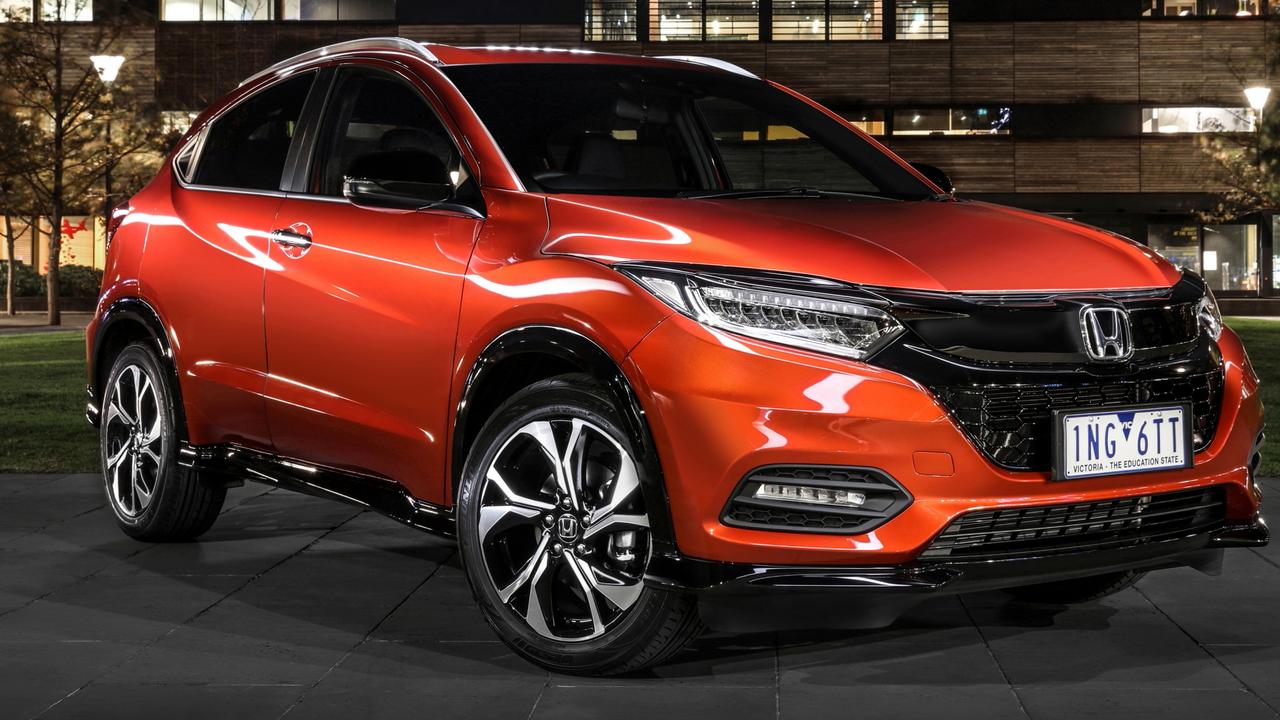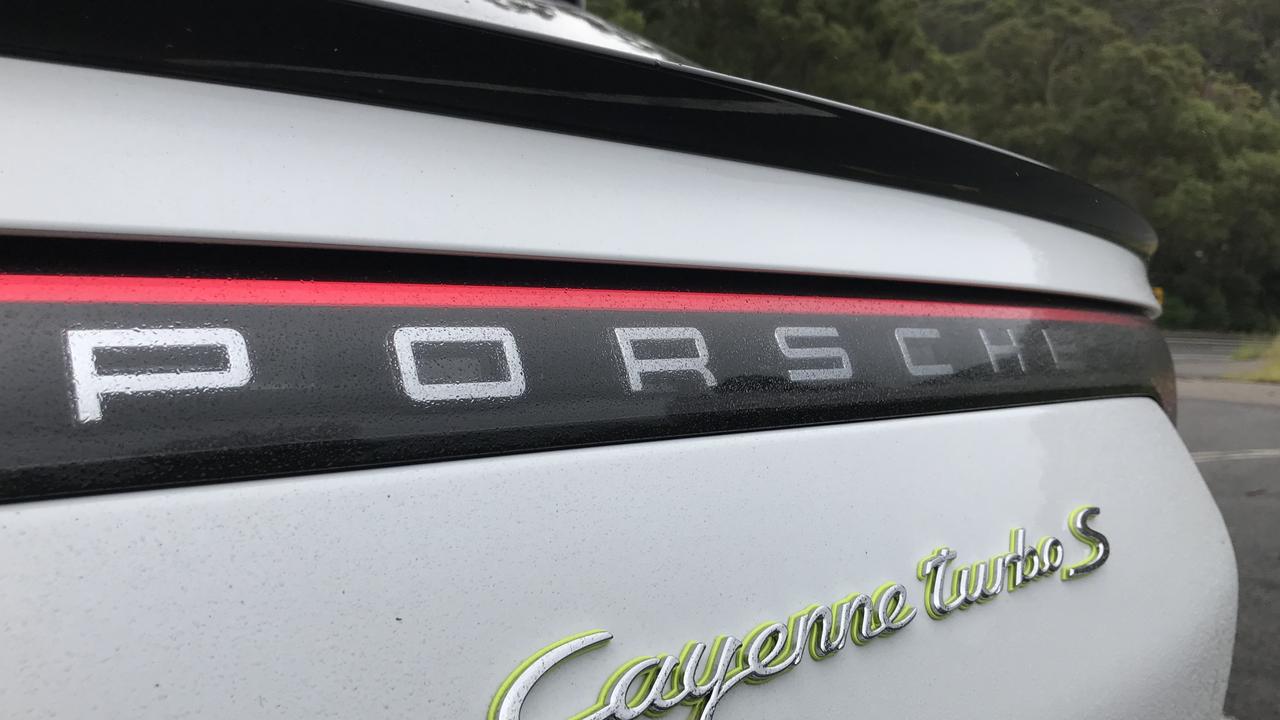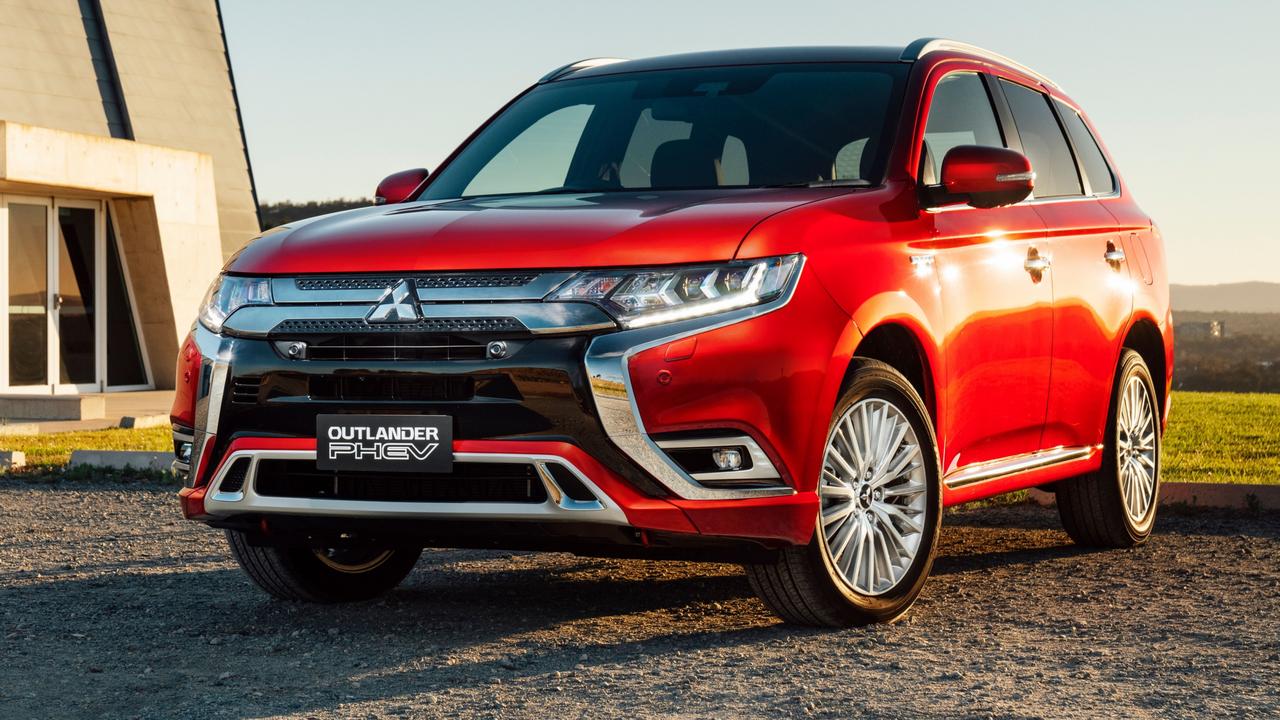Toyota 70 Series Review: A nostalgia trip
No other 4WD can take a hiding like the 70 Series

NOW that Land Rover’s Defender has bitten the dust and Nissan’s Y61 Patrol is about to do the same, Toyota’s 70 Series stands alone as the last of the 4WD dinosaurs.
Unlike the Defender and Patrol, however, the 70 Series has continued to sell in sufficient numbers to warrant ongoing development, although a drive in Toyota’s workhorse is still a nostalgia trip back to the mid-1980s.
Remote Australia is 70 Series heartland and miners, farmers, government departments and NGOs are its main customers, along with outback adventurers and those who need to tow up to 3500kg.
DESIGN
Occupational health and safety policies now dictate the purchase of five-star ANCAP-rated vehicles by many government and industry users, so Toyota has upgraded the single cab chassis stablemate, the 79 Series, to five-star standard.
To do so, it uses a stronger ladder frame, thicker body panels, curtain and driver’s knee airbags, under-dash padding, new seats, a relocated steering link and taller bonnet to reduce the potential for pedestrian head injuries.
But for the bonnet, the other variants — double cab chassis, three-door troop carrier and five-door wagon — don’t get these updates.
They have not been tested by ANCAP and their airbag count remains at two.
All models gain stability and traction control, front seat belt pre-tensioners, electronic brake force distribution and cruise control.
The cabin is a time warp, loaded with quaint, retro stuff from a world long gone, such as sliding ventilation controls, cigarette lighter, multiple ashtrays, manually adjustable side mirrors, plunger door locks and a flat, upright windscreen with thin pillars on either side. Airconditioning is a $2761 option.
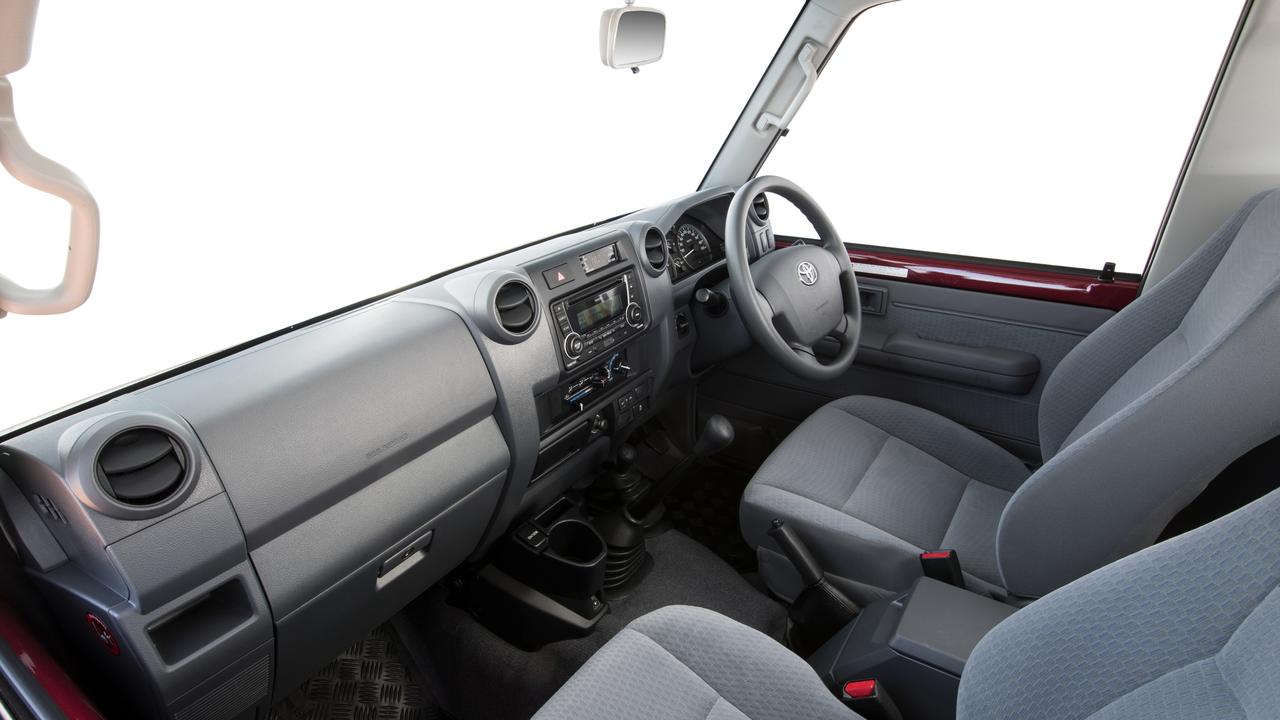
Headroom is sufficient to accommodate those huge hats they wear in outback Queensland but tall cowboys suffer because the seat, though generously padded, has limited travel and backrest adjustment, so you have to sit close to the steering wheel, just like the bad old days.
Getting in and out of the Cruiser is also a challenge because serious climbing is involved and the front door openings are tight. There’s reasonable leg room in the wagon’s rear seat, a flat, firm bench — with, would you believe, a lap-only belt in the centre position.
Access to the cargo area is via 60-40 split barn doors. It’s a giant, almost perfectly square box, with one metre between floor and roof, particularly useful if you’re carrying large objects. The middle bench tumbles to yield almost 1.5m of extended floor.
AROUND TOWN
It’s difficult to imagine a vehicle less suited to the urban jungle, although the 4.5-litre V8 turbo’s tractor-like grunt is just the ticket in bumper to bumper traffic, where you need never push the revs beyond a slightly fast idle.
The long-throw five-speed manual likes a slow, gentle shift; the clutch is fairly heavy and progressive in take-up. Hill start assist operates for two seconds.
Efficient piezoelectric fuel injectors, a diesel particulate filter (with a manual regeneration function) and taller second and fifth gears help the V8 comply with Euro 5 emissions regulations. Our five-door GXL wagon returned 13.0-14.0L/100km in town, which isn’t bad for eight cylinders.
ON THE ROAD
In Toyota’s HiLux and Prado, the 2.8-litre four-cylinder turbo diesel now generates more torque than the Cruiser’s V8 (450Nm v 430Nm) but the beautifully smooth, delightfully growly eight-banger delivers it all in a leisurely surge from just 1200rpm, which corresponds to 60km/h in fifth gear. On the open road, you can just leave it there.
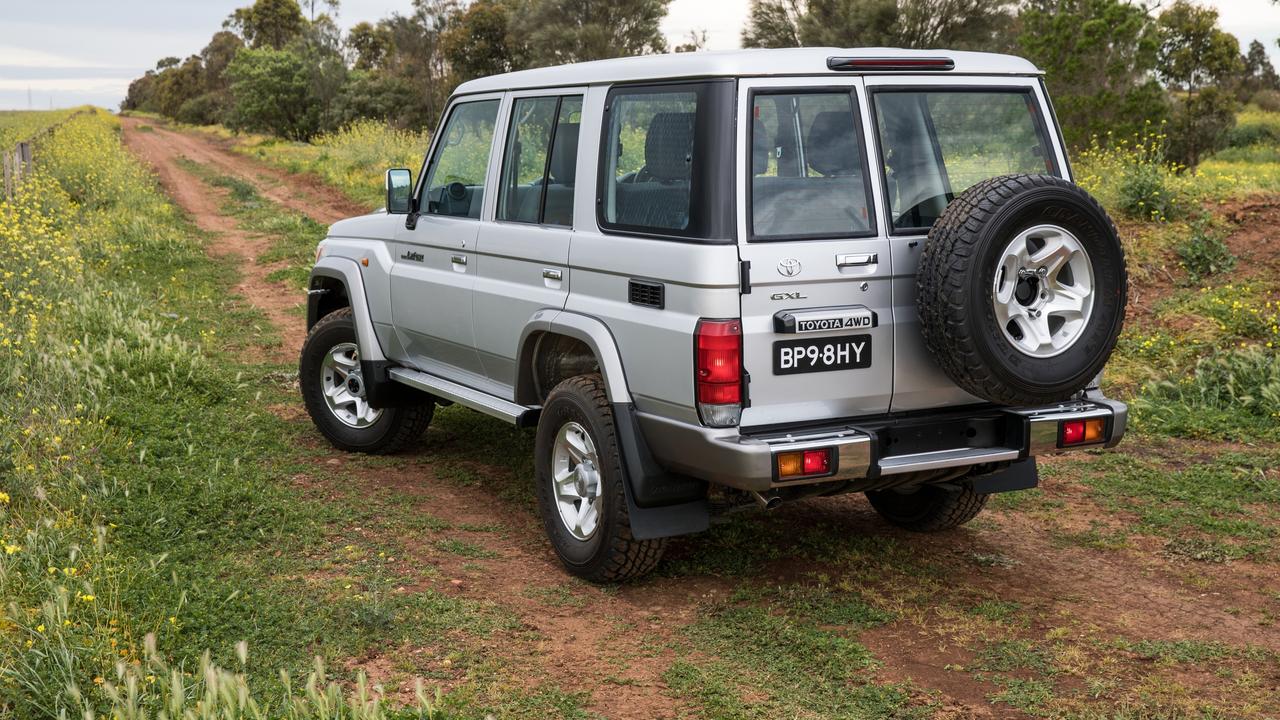
At 100km/h, it’s pulling 2000rpm; that’s 200rpm fewer than previously, so single figure fuel numbers are achievable (just) and you’ll go a long way on the 130L tank.
There is still the matter of its mass — the 0-100km/h, er, sprint takes about five minutes.
Piloting this tall, skinny 2.26-tonne box — sitting on rigid axles at both ends, with leaf springs at the rear, recirculating ball steering and all-terrain 265/70 Dunlop Grandtrek tyres — demands caution.
You don’t so much steer as point it and hope, and even with stability control now fitted you won’t be forgiven if you carry excessive speed into a tight corner. The Toyota will just fall over. The body wobbles around a bit on rough roads but roadholding and ride comfort are surprisingly good.
It’s noisy in the cabin at highway speeds, mainly due to wind turbulence generated by the snorkel on the driver’s side.
You can tow 3500kg and carry the maximum payload of 795kg, while still coming within the maximum gross combined mass (GCM) of 6560kg.
The 70's already peerless off-road ability is complemented by the 200 Series’ active traction control, which operates in high and low-range and can be switched off. If you get stuck, standard diff locks at both ends should get you mobile; if they don’t, you really are in strife and it’s time for the long-handle shovel.
VERDICT ★★★
The 70 Series isn’t intended for suburban consumption. If it was, it would be a stupendous fail. As a specialised, fit-for-purpose machine, though, it still works.
No other 4WD, straight out of the box, is as well-adapted to the bush or as capable of taking sustained, severe punishment, of the sort that would destroy most one-tonner utes. Owners put hundreds of thousands of kilometres on these things and their reliability is legendary.
WHAT’S NEW
WHAT IT’S GOT
Two airbags, stability control, cruise control, Bluetooth, USB socket, 12V outlet, snorkel, front and rear diff locks, 16-inch alloy wheels, full-size spare, cloth upholstery, three ashtrays, cigarette lighter.
WHAT IT HASN’T
Airconditioning, automatic transmission, side airbags, curtain airbags, touchscreen infotainment, navigation, Apple CarPlay, Android Auto, automatic emergency braking, radar cruise, collision alert, lane departure warning/lane keeping, blind-spot monitoring, rear camera, parking sensors.
OWNERSHIP
Servicing costs $2040 over 3 years/60,000km, with intervals of 6 months/10,000km.
WHAT WE LIKED
Smooth, lazy, grunt-laden V8. The reassurance that it can take you just about anywhere and get you back. Easy towing and viable GCM. Suspension works well on rough roads. Great outward vision. Big cargo bay. Cheap servicing. Strong resale values.
WHAT WE DIDN’T
There’s more standard equipment in a $12,990 shopping trolley. All models should have got the five-star ANCAP upgrade. Lap-only belt in the back seat — how do they get away with that? Wants to fall over in tight corners. Vague steering. Weak brakes. Cramped driving position. Wind noise at highway speeds. Short service intervals. No auto option.
ALSO CONSIDER
FORD EVEREST TREND $60,990
Ranger-based 4WD wagon outguns the Toyota with a 470Nm 3.2-litre, six-speed auto, all the safety and infotainment tech, five stars from ANCAP and seven seats.
NISSAN Y61 PATROL ST $57,990
Dates from the 1980s and about to become extinct, with the final “Legend Edition” now on sale. Big, cheap, comfortable and a respectable bush truck, too.
AT A GLANCE
TOYOTA 76 SERIES LANDCRUISER GXL
PRICE $64,990 (as tested, $68,301)
WARRANTY 3 years/100,000km
CAPPED SERVICING $2040 over 3 years/ 60,000km
SERVICE INTERVAL 6 months/10,000km
SAFETY No ANCAP rating, 2 airbags
ENGINE4.5-litre V8 turbo diesel, 151kW/430Nm
TRANSMISSION 5-speed man; 4WD
THIRST 10.7L/100km
DIMENSIONS 4910mm (L), 1870mm (W), 1940mm (H), 2730mm (WB)
WEIGHT 2265kg
SPARE Full-size alloy
TOWING 3500kg

